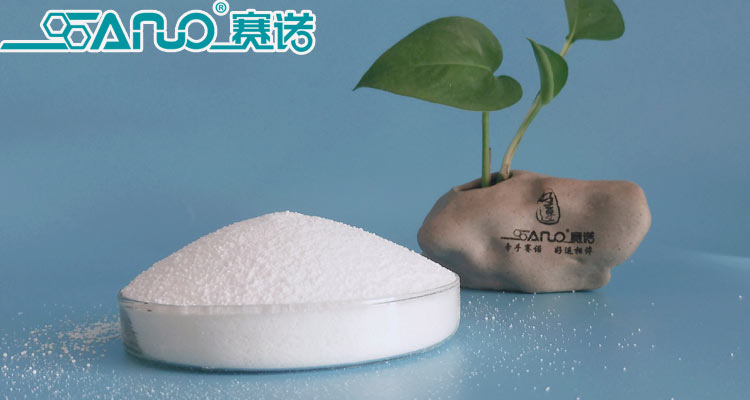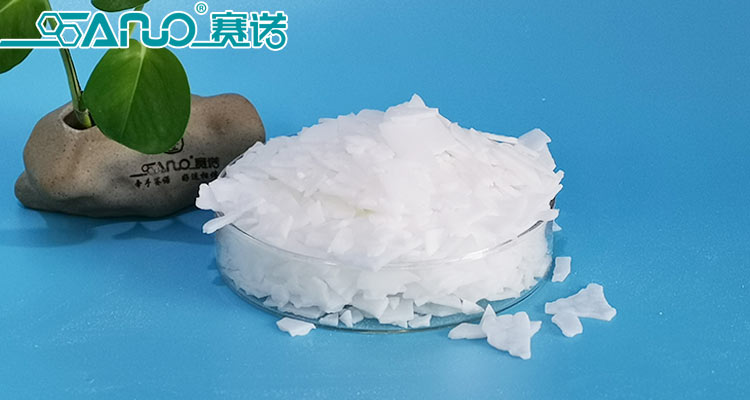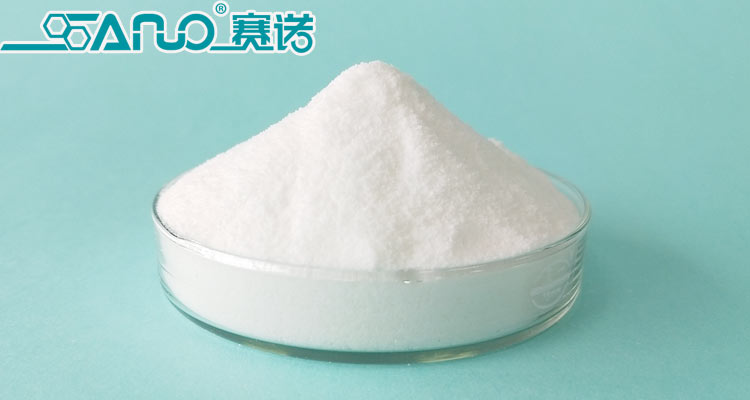The factors such as shrinkage, fluidity, crystallinity, heat sensitive plastics and easily hydrolyzed plastics, stress cracking and melt cracking, thermal performance, cooling rate, moisture absorption and so on should be considered in the setting of injection molding process.

Sainuo EBS wax
1. Shrinkage
The form and calculation of thermoplastic molding shrinkage are described above. The factors affecting thermoplastic molding shrinkage are as follows:
1.1 plastic varieties
During the molding process of thermoplastic, due to the volume change caused by crystallization, strong internal stress, large residual stress frozen in the plastic part, strong molecular orientation and other factors, compared with thermosetting plastics, the shrinkage rate is large, the shrinkage range is wide and the directionality is obvious. In addition, the shrinkage The shrinkage after annealing or humidity control treatment is generally larger than that of thermosetting plastics.
1.2 plastic part characteristics
During molding, the molten material contacts the cavity surface, and the outer layer immediately cools to form a low-density solid shell. Due to the poor thermal conductivity of plastic, the inner layer of plastic parts cools slowly to form a high-density solid layer with large shrinkage. Therefore, the wall thickness, slow cooling and high-density layer thickness shrink greatly. In addition, the presence or absence of inserts, the layout and quantity of inserts directly affect the material flow direction, density distribution and shrinkage resistance, so the characteristics of plastic parts have a great impact on the shrinkage size and direction.
1.3 feed inlet form, size and distribution
These factors directly affect the material flow direction, density distribution, pressure maintaining and feeding effect and forming time. If the section of the direct feed port and the feed port is large (especially if the section is thick), the shrinkage is small but the directionality is large, and if the width and length of the feed port are short, the directionality is small. If it is close to the feed port or parallel to the material flow direction, the shrinkage is large.
1.4 forming conditions
High mold temperature, slow cooling of molten material, high density and large shrinkage, especially for crystalline material, due to high crystallinity and large volume change, the shrinkage is greater. The mold temperature distribution is also related to the internal and external cooling of plastic parts and the uniformity of density, which directly affects the size and direction of shrinkage of each part. In addition, holding pressure and time also have a great impact on contraction. Those with high pressure and long time have small contraction but large directionality.
The injection pressure is high, the viscosity difference of molten material is small, the interlayer shear stress is small, and the elastic rebound after demoulding is large, so the shrinkage can also be reduced appropriately. The material temperature is high, the shrinkage is large, but the directionality is small. Therefore, the shrinkage of plastic parts can also be appropriately changed by adjusting mold temperature, pressure, injection speed and cooling time.

Sainuo pe wax flake
During mold design, the shrinkage rate of each part of the plastic part shall be determined according to experience according to the shrinkage range of various plastics, wall thickness and shape of plastic parts, form, size and distribution of feed inlet, and then the cavity size shall be calculated. For high-precision plastic parts and when it is difficult to master the shrinkage, the following methods should be used to design the mold:
① For the outer diameter of the plastic part, the smaller shrinkage rate is taken, and the larger shrinkage rate is taken for the inner diameter, so as to leave room for correction after mold test.
② The form, size and forming conditions of gating system are determined by mold test.
③ The size change of plastic parts to be post treated shall be determined after post-treatment (measurement must be 24 hours after demoulding).
④ Correct the die according to the actual shrinkage.
⑤ Try the mold again, and change the process conditions appropriately, and slightly modify the shrinkage value to meet the requirements of plastic parts.
2. Mobility
The fluidity of thermoplastics can generally be analyzed from a series of indexes such as molecular weight, melt index, Archimedean spiral flow length, apparent viscosity and flow ratio (process length / plastic part wall thickness).
If the molecular weight is small, the molecular weight distribution is wide, the molecular structure regularity is poor, the melt index is high, the screw flow length is long, the apparent viscosity is small, and the flow ratio is large, the fluidity is good. For plastics with the same product name, the instructions must be checked to determine whether their fluidity is suitable for injection molding. According to the mold design requirements, the fluidity of common plastics can be roughly divided into three categories:
① Good fluidity: PA, PE, PS, PP, CA, poly (4) methylene;
② Polystyrene series resins with medium fluidity (such as ABS, as), PMMA, POM and polyphenylene ether;
③ Poor fluidity PC, hard PVC, polyphenylene ether, polysulfone, polysulfone, fluoroplastics.
The fluidity of various plastics also changes due to various molding factors. The main influencing factors are as follows:
① When the temperature is high, the fluidity increases, but different plastics also have differences. The fluidity of PS (especially those with high impact resistance and MFR value), PP, PA, PMMA, modified polystyrene (such as ABS, as), PC, Ca and other plastics changes greatly with temperature. For PE, POM and, the increase or decrease of temperature has little effect on their fluidity. Therefore, the former should adjust the temperature to control the fluidity.
② With the increase of injection pressure, the molten material will be greatly sheared and the fluidity will also increase, especially PE and POM are more sensitive, so the injection pressure should be adjusted to control the fluidity during molding.
③ Mold structure, gating system form, size, layout, cooling system design, molten material flow resistance (such as surface finish, material channel section thickness, cavity shape, exhaust system) and other factors directly affect the actual fluidity of molten material in the cavity. If the molten material is prompted to reduce the temperature and increase the fluidity resistance, the fluidity will be reduced.
Reasonable structure shall be selected according to the fluidity of the plastic used in the mold design. During molding, the material temperature, mold temperature, injection pressure, injection speed and other factors can also be controlled to properly adjust the filling situation to meet the molding needs.
3. Crystallinity
Thermoplastics can be divided into crystalline plastics and amorphous (also known as amorphous) plastics according to their no crystallization during condensation.
The so-called crystallization phenomenon is a phenomenon that the molecules move independently and completely in an disordered state from the melting state to the condensation state of plastics, and become a phenomenon that the molecules stop moving freely, press a slightly fixed position, and have a tendency to make the molecular arrangement become a normal model.
As the appearance standard for judging these two types of plastics, it can be determined by the transparency of thick wall plastic parts of plastics. Generally, crystalline materials are opaque or translucent (such as POM), and amorphous materials are transparent (such as PMMA). However, there are exceptions. For example, poly (4) methylene is a crystalline plastic with high transparency, and ABS is an amorphous material but not transparent.

Sainuo ope wax powder
The following requirements and precautions for crystalline plastics shall be noted during mold design and selection of injection molding machine:
① More heat is required for the material temperature to rise to the forming temperature, so the equipment with large plasticizing capacity should be used.
② The heat released during cooling and recycling is large, so it should be fully cooled.
③ The specific gravity difference between molten state and solid state is large, the molding shrinkage is large, and shrinkage and porosity are easy to occur.
④ Fast cooling, low crystallinity, small shrinkage and high transparency. The crystallinity is related to the wall thickness of the plastic part. The wall thickness has the advantages of slow cooling, high crystallinity, large shrinkage and good physical properties. Therefore, the mold temperature of crystalline material must be controlled as required.
⑤ Significant anisotropy and large internal stress. After demoulding, the non crystallized molecules tend to continue to crystallize, are in an energy imbalance state, and are prone to deformation and warpage.
⑥ The crystallization temperature range is narrow, and it is easy to inject unmelted material into the die or block the feed inlet.
Qingdao Sainuo Chemical Co.,Ltd. We are manufacturer for PE wax, PP wax, OPE wax, EVA wax, PEMA, EBS,Zinc/Calcium Stearate…. Our products have passed the REACH, ROHS, PAHS, FDA testing. Sainuo rest assured wax, welcome your inquiry! Website:https://www.sanowax.com
E-mail:sales@qdsainuo.com
sales1@qdsainuo.com
Adress:Room 2702,Block B, Suning Building, Jingkou Road, Licang District, Qingdao, China
Post time: Aug-13-2021
